Related Research Articles

Hadrian was Roman emperor from 117 to 138. A member of the Nerva-Antonine dynasty and one of the so-called "Five Good Emperors", he is renowned for his travels throughout the empire and the civil and military constructions of his reign. Later historians regarded Hadrian as a "benevolent dictator" while the Senate found him remote and authoritarian. He has been described as enigmatic and contradictory, with a capacity for both great personal generosity and extreme cruelty and driven by insatiable curiosity, self-conceit, and ambition.
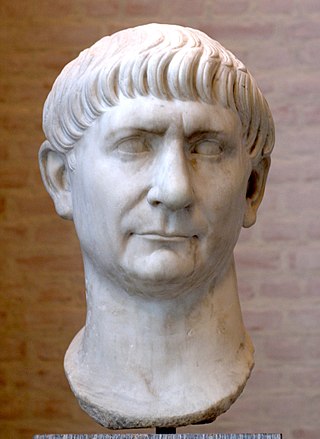
Trajan was Roman emperor from 98 to 117, one of the Five Good Emperors of the Nerva–Antonine dynasty. He was a philanthropic ruler and a successful soldier-emperor, who led the Roman Empire to its greatest territorial extent by the time of his death. He was given the title of optimus princeps by the Roman Senate.

The 110s was a decade that ran from January 1, AD 110, to December 31, AD 119.

The 120s was a decade that ran from January 1, AD 120, to December 31, AD 129.

Antinous, also called Antinoös, was a Greek youth from Bithynia and a favourite and lover of the Roman emperor Hadrian. Following his premature death before his twentieth birthday, Antinous was deified on Hadrian's orders, being worshipped in both the Greek East and Latin West, sometimes as a god and sometimes merely as a hero.
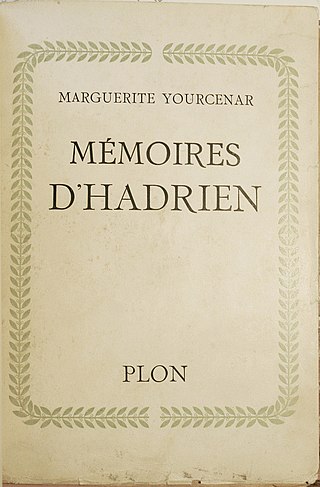
Memoirs of Hadrian is a novel by the Belgian-born French writer Marguerite Yourcenar about the life and death of the Roman Emperor Hadrian. First published in France in French in 1951 as Mémoires d'Hadrien, the book was an immediate success, meeting with enormous critical acclaim. Although the historical Hadrian wrote an autobiography, it has been lost.
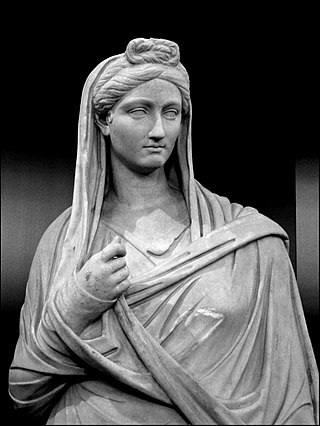
Vibia Sabina (83–136/137) was a Roman Empress, wife and second cousin once removed to the Roman Emperor Hadrian. She was the daughter of Matidia and suffect consul Lucius Vibius Sabinus.

Pompeia Plotina was Roman empress from 98 to 117 as the wife of Trajan. She was renowned for her interest in philosophy, and her virtue, dignity and simplicity. She was particularly devoted to the Epicurean philosophical school in Athens, Greece. She is often viewed as having provided Romans with fairer taxation, improved education, assisted the poor, and created tolerance in Roman society.

Hadrian's Villa is a UNESCO World Heritage Site comprising the ruins and archaeological remains of a large villa complex built around AD 120 by Roman Emperor Hadrian near Tivoli outside Rome.

The Kitos War was one of the major Jewish–Roman wars (66–136). The rebellions erupted in 115 when most of the Roman armies were fighting Trajan's Parthian War on the eastern border of the Roman Empire. Major uprisings by Jews in Cyrenaica, Cyprus and Egypt spiralled out of control, resulting in a widespread slaughter of the remaining Roman garrisons and Roman citizens by Jewish rebels.

Battlefield Britain is a 2004 BBC television documentary series about famous battles in British history. The 8 part series covers battles from Boudicca's rebellion against the Romans in 60AD to the Battle of Britain in 1940 it also covers the impact and implications the battles had on the future of the British isles.
Quintus Marcius Turbo was prefect of the Praetorian Guard and a close friend and military advisor to both emperor Trajan and Hadrian during the early 2nd century.
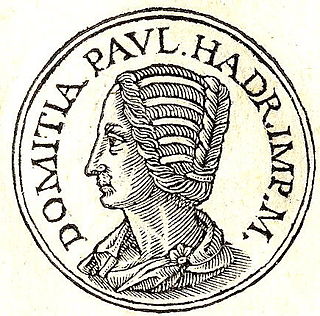
Paulina or Paullina is a common female given name Latin. In Greek it means: Pavlina was a name shared by three relatives of the Roman Emperor Hadrian: his mother, his elder sister and his niece.
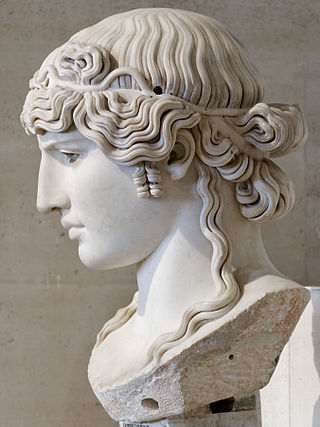
The Antinous Mondragone is a 0.95-metre high marble example of the Mondragone type of the deified Antinous. This colossal head was made sometime in the period between 130 AD to 138 AD and then is believed to have been rediscovered in the early 18th century, near the ruined Roman city, Tusculum. After its rediscovery, it was housed at the Villa Mondragone as a part of the Borghese collection, and in 1807, it was sold to Napoleon Bonaparte; it is now housed in the Louvre in Paris, France.

Daniel Robert Snow is a British popular historian and television presenter.

The Antinous Farnese is a marble sculptural representation of Antinous that was sculpted between 130 and 137 CE. Antinous was the lover to Roman Emperor Hadrian; the emperor who, after Antinous's death, perpetuated the image of Antinous as a Roman god within the Roman empire. This sculpture is a part of the Roman Imperial style and was sculpted during a revival of Greek culture, initiated by Hadrian's philhellenism. Its found spot and provenance are unknown, but this sculpture is currently a part of the Farnese Collection in the Naples National Archaeological Museum.
Lucius Julius Ursus Servianus was an Iberian Roman politician. He was a prominent public figure in the reigns of Roman emperors Nerva, Trajan and Hadrian. He was the last private citizen to receive a third consulship; such honors came to be reserved for members of the emperor's family.

Treasures of Ancient Rome is a 2012 three-part documentary written and presented by Alastair Sooke. The series was produced by the BBC, and originally aired in September 2012 on BBC Four. In the documentary Sooke sets out to "debunk the myth that Romans didn't do art and were unoriginal". This is based on the view that Romans heavily incorporated Greek style in their art, and hence produced nothing new or original. Sooke has received some criticism from the media because there is no consensus among academics on this topic, and hence no 'myth' exists in the first place.
Hadrian is an opera composed by American-Canadian singer-songwriter Rufus Wainwright, with a libretto by Daniel MacIvor, based on the life of Hadrian, Roman emperor from 117 to 138. First staged by the Canadian Opera Company, the opera premiered October 13, 2018 at the Four Seasons Centre in Toronto, directed by Peter Hinton.
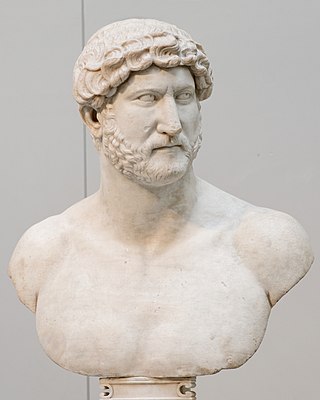
A bust of Hadrian, the second-century Roman emperor who rebuilt the Pantheon and constructed the Temple of Venus and Roma, was formerly displayed in Pope Sixtus V's Villa Montalto and is now displayed at the British Museum in London. The bust is one of the Townley Marbles collected by Charles Townley (1737–1805) and sold by his heir Peregrine Edward Towneley at a reduced price to the British Museum in 1805. Unlike most busts of Hadrian and other emperors, it shows him in heroic nudity. The bust was found in Rome and is carved from Greek marble.
References
- ↑ Wollaston, Sam (21 July 2008). "Last night's TV". The Guardian . Retrieved 26 July 2008.
- ↑ Billen, Andrew (21 July 2008). "Weekend TV". The Times . London. Retrieved 26 July 2008.
- ↑ Holmwood, Laeigh (21 July 2008). "TV ratings: Hadrian documentary watched by 2.2m". The Guardian . Retrieved 26 July 2008.
- ↑ "BBC Wales' 11 Bafta Cymru winners". BBC News. 18 May 2009. Retrieved 15 January 2010.